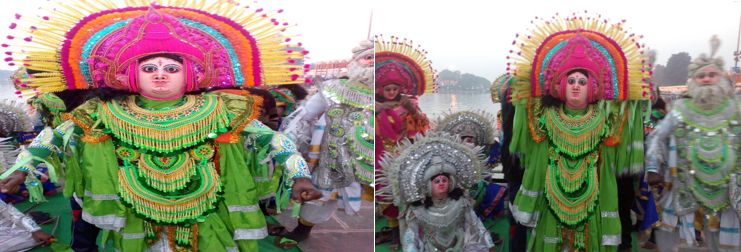-
The Munda community of Jharkhand performs the
Paika Dance. It is a stylized representation of
the rituals connected with the preparations of
war. The dancers hold bows, arrows, spears,
swords and shields and the dance is, in fact a
stylized worship of arms. The martial character
of the dance is retained by the use of the
shield and sword. The dancers display their
skills in handling the sword and shield and the
dance reaches a climax with the fast beat of the
Madal. Previously the dance was performed to
welcome guests, but nowadays it is also
performed on different happy occasions like
weddings. The Dussehra celebrations remain
incomplete without this dance. The musical
accompaniments of this dance are the Dhol,
Nagara, Shehnai and Ranbheri. The Mundas
originally came from North West India, but later
moved to the Chota Nagpur Plateau. They began
their settlements here by clearning forests.
They were the first tribal people to resist
colonization. The Paika Dance of the Mundas
symbolises the great war of their community
against the British. Besides their protective
chest blades, the dances also wear colourful
headgear and bells around their ankles. This
captivating dance form, which is indigenous to
the Mundas, is a martial art with variations
throughout Jharkhand
|
|
The Seraikella Chhau is one of the three Chhau dance
forms prevailing in Eastern India, in the states of
West Bengal, Orissa and Jharkhand. This dance form
based on the martial arts incorporates the Veera
Rasa of the Indian dramatic spectrum. The Seraikella
Chhau Dance is an art form, which combines popular
appeal with sophistication. The nature of the themes
is similar to those of the classical dance forms,
but it has permeated the rank and file of the
people. The dances are usually vigorous |

